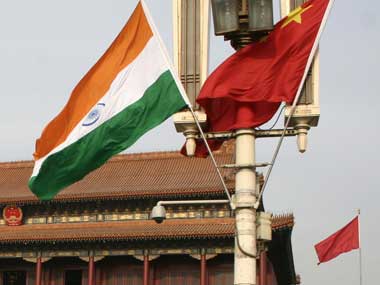There’s nothing more calculated to excite headline writers in India than the prospect of our “overtaking” China - whatever that means.
Chief economic adviser Kaushik Basu's most recent observation -that India’s growth rate was poised to overtake China’s within two to three years-has set off another flourish of breathless -and wholly premature - trumpeteering.
[caption id=“attachment_32640” align=“alignleft” width=“380” caption=“Overtaking China is not an easy task. Grace Liang/Reuters”]  [/caption]
In the unnuanced narrative that such celebrations are born of, India and China are locked in a civilizational race, the outcome of which will be determined at that precise moment when, owing to a peculiar confluence of events and factors, India’s GDP growth rate fleetingly edges past China’s.
And although intimations of that statistical milestone moment have been around for some years now, India hasn’t quite managed that growth spurt to get in ahead of China.
China’s economy has grown at a frenetic 10% compounded annual growth rate for close to 30 years, largely on the strength of an investment-led export boom underwritten by an abundance of cheap labour in an era of enhanced global trade. It was also facilitated by a political ecosystem where the government has virtually untrammelled powers to bend the arc of society and marshall it with unity of purpose in the project of nation-building. There are occasions when that excessive executive authority has fed malinvestment and fed distortions, but where it does work, it works extremely efficiently.
But, in equal measure, the foundations for China’s growth miracle from the 1980s were laid earlier - when China invested in education and public health, especially in the rural areas. It was that investment in human capital that China was able to leverage when its economy opened up to the world.
As political economist and MIT Sloan School of Management professor Yasheng Huang - who is no fan of China’s investment-led growth model - told me two years ago:
“The biggest lesson for India from China is the importance of the social sector: education and health. When India doesn’t educate its girls, it is counterproductive – economically and socially. The other important lesson is for India to get the sequence right. You look at China, and you see airports, highways and you think that China succeeded because of these. Whereas, in fact, these things followed China’s success. China succeeded in the first place because of the social investments it made in the 1970s.”
Today, after that breathless run of 30 years, and confronted with a collapse of its investment-led export-driven growth model, China is attempting to engineer a shift in its economy to make it more focussed on internal consumption. But given the structural imbalances entrenched in the system, that 180-degree turn won’t happen quickly enough. And since China is simultaneously looking to deflate a high-end property bubble, China’s economy may likely fall below the 8% growth rate if the internal consumption drivers don’t kick in.
It is that possibility that gives India a tiny window to sneak past China on the growth measure. But then India too faces downside risks to its growth rate in the short term, so there’s no certainty that it will “overtake” China, even over the next two or three years. Which is why any rejoicing on that count is entirely premature.
In a larger sense, our obsession with topping China’s growth rate is entirely flawed and - reflects an adolescent “mine’s bigger than yours” mindset. Only when we’ve outgrown that phase-and when stray projections about India ‘overtaking’ China ceases to make it to the headlines-can the discourse on our economy be said to have matured.


)
)
)
)
)
)
)
)
)



